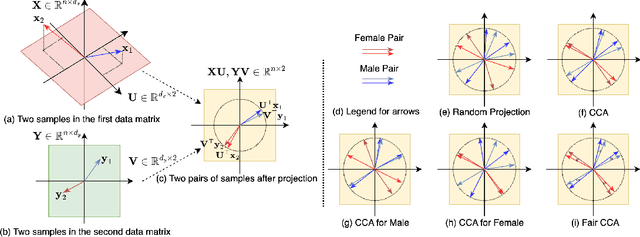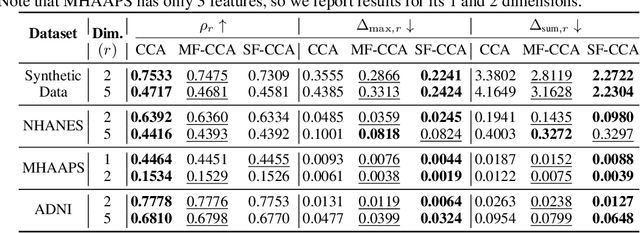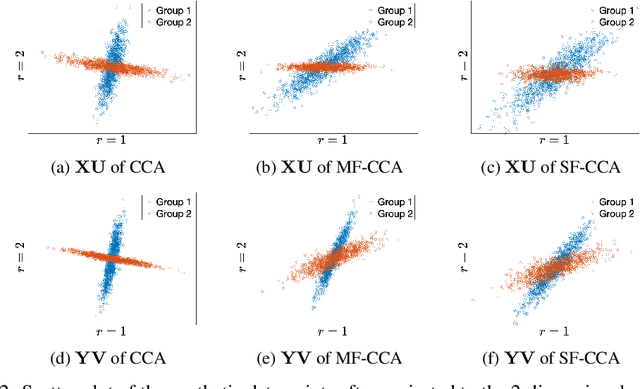Bojian Hou
Restoring Calibration for Aligned Large Language Models: A Calibration-Aware Fine-Tuning Approach
May 04, 2025



Abstract:One of the key technologies for the success of Large Language Models (LLMs) is preference alignment. However, a notable side effect of preference alignment is poor calibration: while the pre-trained models are typically well-calibrated, LLMs tend to become poorly calibrated after alignment with human preferences. In this paper, we investigate why preference alignment affects calibration and how to address this issue. For the first question, we observe that the preference collapse issue in alignment undesirably generalizes to the calibration scenario, causing LLMs to exhibit overconfidence and poor calibration. To address this, we demonstrate the importance of fine-tuning with domain-specific knowledge to alleviate the overconfidence issue. To further analyze whether this affects the model's performance, we categorize models into two regimes: calibratable and non-calibratable, defined by bounds of Expected Calibration Error (ECE). In the calibratable regime, we propose a calibration-aware fine-tuning approach to achieve proper calibration without compromising LLMs' performance. However, as models are further fine-tuned for better performance, they enter the non-calibratable regime. For this case, we develop an EM-algorithm-based ECE regularization for the fine-tuning loss to maintain low calibration error. Extensive experiments validate the effectiveness of the proposed methods.
ICAFS: Inter-Client-Aware Feature Selection for Vertical Federated Learning
Apr 15, 2025Abstract:Vertical federated learning (VFL) enables a paradigm for vertically partitioned data across clients to collaboratively train machine learning models. Feature selection (FS) plays a crucial role in Vertical Federated Learning (VFL) due to the unique nature that data are distributed across multiple clients. In VFL, different clients possess distinct subsets of features for overlapping data samples, making the process of identifying and selecting the most relevant features a complex yet essential task. Previous FS efforts have primarily revolved around intra-client feature selection, overlooking vital feature interaction across clients, leading to subpar model outcomes. We introduce ICAFS, a novel multi-stage ensemble approach for effective FS in VFL by considering inter-client interactions. By employing conditional feature synthesis alongside multiple learnable feature selectors, ICAFS facilitates ensemble FS over these selectors using synthetic embeddings. This method bypasses the limitations of private gradient sharing and allows for model training using real data with refined embeddings. Experiments on multiple real-world datasets demonstrate that ICAFS surpasses current state-of-the-art methods in prediction accuracy.
SEFD: Semantic-Enhanced Framework for Detecting LLM-Generated Text
Nov 17, 2024Abstract:The widespread adoption of large language models (LLMs) has created an urgent need for robust tools to detect LLM-generated text, especially in light of \textit{paraphrasing} techniques that often evade existing detection methods. To address this challenge, we present a novel semantic-enhanced framework for detecting LLM-generated text (SEFD) that leverages a retrieval-based mechanism to fully utilize text semantics. Our framework improves upon existing detection methods by systematically integrating retrieval-based techniques with traditional detectors, employing a carefully curated retrieval mechanism that strikes a balance between comprehensive coverage and computational efficiency. We showcase the effectiveness of our approach in sequential text scenarios common in real-world applications, such as online forums and Q\&A platforms. Through comprehensive experiments across various LLM-generated texts and detection methods, we demonstrate that our framework substantially enhances detection accuracy in paraphrasing scenarios while maintaining robustness for standard LLM-generated content.
Leveraging Social Determinants of Health in Alzheimer's Research Using LLM-Augmented Literature Mining and Knowledge Graphs
Oct 04, 2024Abstract:Growing evidence suggests that social determinants of health (SDoH), a set of nonmedical factors, affect individuals' risks of developing Alzheimer's disease (AD) and related dementias. Nevertheless, the etiological mechanisms underlying such relationships remain largely unclear, mainly due to difficulties in collecting relevant information. This study presents a novel, automated framework that leverages recent advancements of large language model (LLM) and natural language processing techniques to mine SDoH knowledge from extensive literature and integrate it with AD-related biological entities extracted from the general-purpose knowledge graph PrimeKG. Utilizing graph neural networks, we performed link prediction tasks to evaluate the resultant SDoH-augmented knowledge graph. Our framework shows promise for enhancing knowledge discovery in AD and can be generalized to other SDoH-related research areas, offering a new tool for exploring the impact of social determinants on health outcomes. Our code is available at: https://github.com/hwq0726/SDoHenPKG
Knowledge-Driven Feature Selection and Engineering for Genotype Data with Large Language Models
Oct 02, 2024



Abstract:Predicting phenotypes with complex genetic bases based on a small, interpretable set of variant features remains a challenging task. Conventionally, data-driven approaches are utilized for this task, yet the high dimensional nature of genotype data makes the analysis and prediction difficult. Motivated by the extensive knowledge encoded in pre-trained LLMs and their success in processing complex biomedical concepts, we set to examine the ability of LLMs in feature selection and engineering for tabular genotype data, with a novel knowledge-driven framework. We develop FREEFORM, Free-flow Reasoning and Ensembling for Enhanced Feature Output and Robust Modeling, designed with chain-of-thought and ensembling principles, to select and engineer features with the intrinsic knowledge of LLMs. Evaluated on two distinct genotype-phenotype datasets, genetic ancestry and hereditary hearing loss, we find this framework outperforms several data-driven methods, particularly on low-shot regimes. FREEFORM is available as open-source framework at GitHub: https://github.com/PennShenLab/FREEFORM.
Fairness-Aware Estimation of Graphical Models
Aug 30, 2024Abstract:This paper examines the issue of fairness in the estimation of graphical models (GMs), particularly Gaussian, Covariance, and Ising models. These models play a vital role in understanding complex relationships in high-dimensional data. However, standard GMs can result in biased outcomes, especially when the underlying data involves sensitive characteristics or protected groups. To address this, we introduce a comprehensive framework designed to reduce bias in the estimation of GMs related to protected attributes. Our approach involves the integration of the pairwise graph disparity error and a tailored loss function into a nonsmooth multi-objective optimization problem, striving to achieve fairness across different sensitive groups while maintaining the effectiveness of the GMs. Experimental evaluations on synthetic and real-world datasets demonstrate that our framework effectively mitigates bias without undermining GMs' performance.
Fine-Tuning Linear Layers Only Is a Simple yet Effective Way for Task Arithmetic
Jul 09, 2024Abstract:Task arithmetic has recently emerged as a cost-effective and scalable approach to edit pre-trained models directly in weight space, by adding the fine-tuned weights of different tasks. The performance has been further improved by a linear property which is illustrated by weight disentanglement. Yet, conventional linearization methods (e.g., NTK linearization) not only double the time and training cost but also have a disadvantage on single-task performance. We propose a simple yet effective and efficient method that only fine-tunes linear layers, which improves weight disentanglement and efficiency simultaneously. Specifically, our study reveals that only fine-tuning the linear layers in the attention modules makes the whole model occur in a linear regime, significantly improving weight disentanglement. To further understand how our method improves the disentanglement of task arithmetic, we present a comprehensive study of task arithmetic by differentiating the role of representation model and task-specific model. In particular, we find that the representation model plays an important role in improving weight disentanglement whereas the task-specific models such as the classification heads can degenerate the weight disentanglement performance. Overall, our work uncovers novel insights into the fundamental mechanisms of task arithmetic and offers a more reliable and effective approach to editing pre-trained models.
DALK: Dynamic Co-Augmentation of LLMs and KG to answer Alzheimer's Disease Questions with Scientific Literature
May 08, 2024



Abstract:Recent advancements in large language models (LLMs) have achieved promising performances across various applications. Nonetheless, the ongoing challenge of integrating long-tail knowledge continues to impede the seamless adoption of LLMs in specialized domains. In this work, we introduce DALK, a.k.a. Dynamic Co-Augmentation of LLMs and KG, to address this limitation and demonstrate its ability on studying Alzheimer's Disease (AD), a specialized sub-field in biomedicine and a global health priority. With a synergized framework of LLM and KG mutually enhancing each other, we first leverage LLM to construct an evolving AD-specific knowledge graph (KG) sourced from AD-related scientific literature, and then we utilize a coarse-to-fine sampling method with a novel self-aware knowledge retrieval approach to select appropriate knowledge from the KG to augment LLM inference capabilities. The experimental results, conducted on our constructed AD question answering (ADQA) benchmark, underscore the efficacy of DALK. Additionally, we perform a series of detailed analyses that can offer valuable insights and guidelines for the emerging topic of mutually enhancing KG and LLM. We will release the code and data at https://github.com/David-Li0406/DALK.
Fair Canonical Correlation Analysis
Sep 27, 2023



Abstract:This paper investigates fairness and bias in Canonical Correlation Analysis (CCA), a widely used statistical technique for examining the relationship between two sets of variables. We present a framework that alleviates unfairness by minimizing the correlation disparity error associated with protected attributes. Our approach enables CCA to learn global projection matrices from all data points while ensuring that these matrices yield comparable correlation levels to group-specific projection matrices. Experimental evaluation on both synthetic and real-world datasets demonstrates the efficacy of our method in reducing correlation disparity error without compromising CCA accuracy.
Evaluate underdiagnosis and overdiagnosis bias of deep learning model on primary open-angle glaucoma diagnosis in under-served patient populations
Jan 29, 2023



Abstract:In the United States, primary open-angle glaucoma (POAG) is the leading cause of blindness, especially among African American and Hispanic individuals. Deep learning has been widely used to detect POAG using fundus images as its performance is comparable to or even surpasses diagnosis by clinicians. However, human bias in clinical diagnosis may be reflected and amplified in the widely-used deep learning models, thus impacting their performance. Biases may cause (1) underdiagnosis, increasing the risks of delayed or inadequate treatment, and (2) overdiagnosis, which may increase individuals' stress, fear, well-being, and unnecessary/costly treatment. In this study, we examined the underdiagnosis and overdiagnosis when applying deep learning in POAG detection based on the Ocular Hypertension Treatment Study (OHTS) from 22 centers across 16 states in the United States. Our results show that the widely-used deep learning model can underdiagnose or overdiagnose underserved populations. The most underdiagnosed group is female younger (< 60 yrs) group, and the most overdiagnosed group is Black older (>=60 yrs) group. Biased diagnosis through traditional deep learning methods may delay disease detection, treatment and create burdens among under-served populations, thereby, raising ethical concerns about using deep learning models in ophthalmology clinics.
* 9 pages, 2 figures, Accepted by AMIA 2023 Informatics Summit
 Add to Chrome
Add to Chrome Add to Firefox
Add to Firefox Add to Edge
Add to Edge